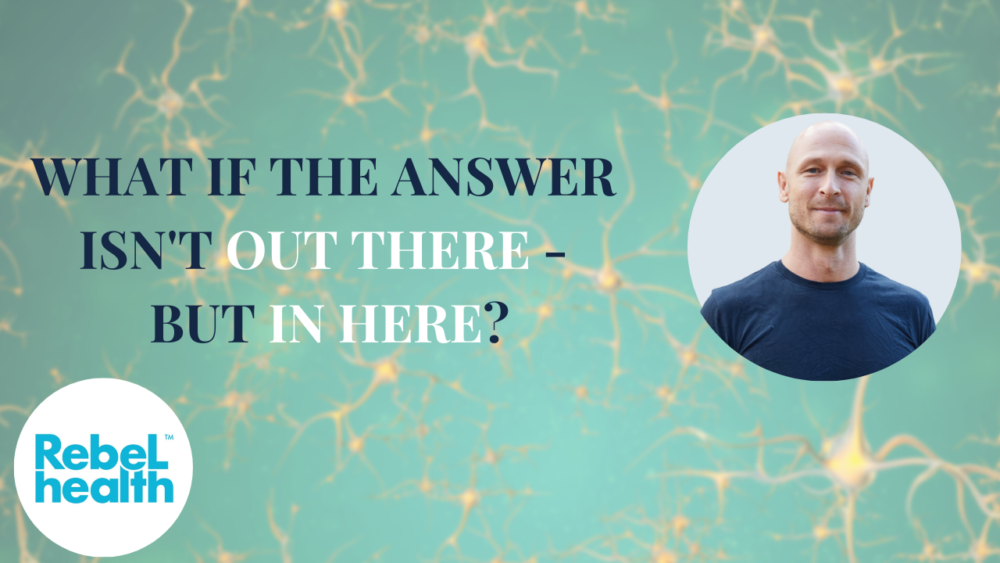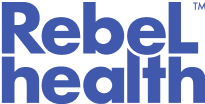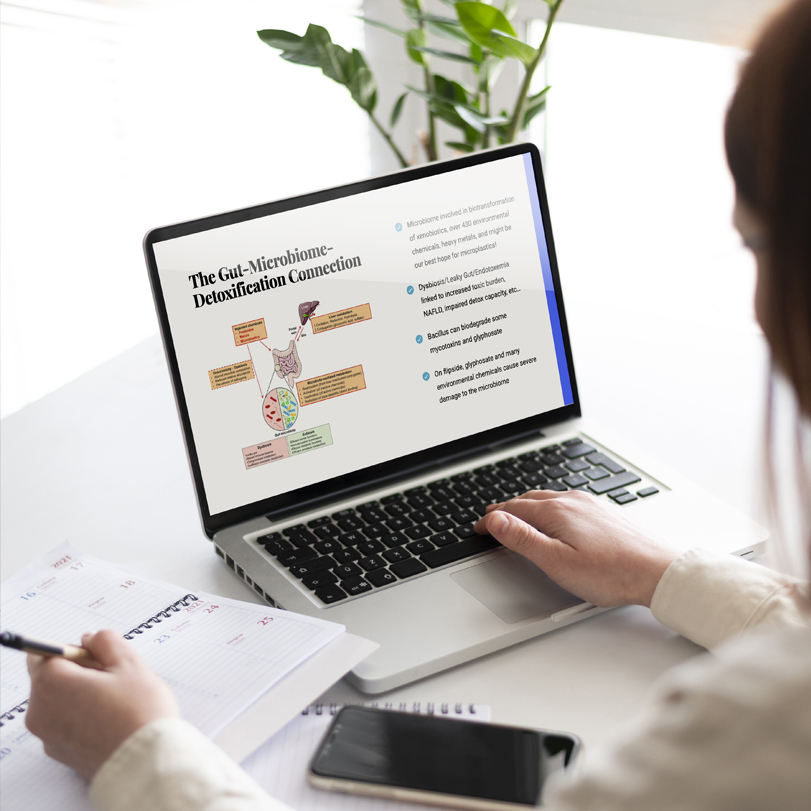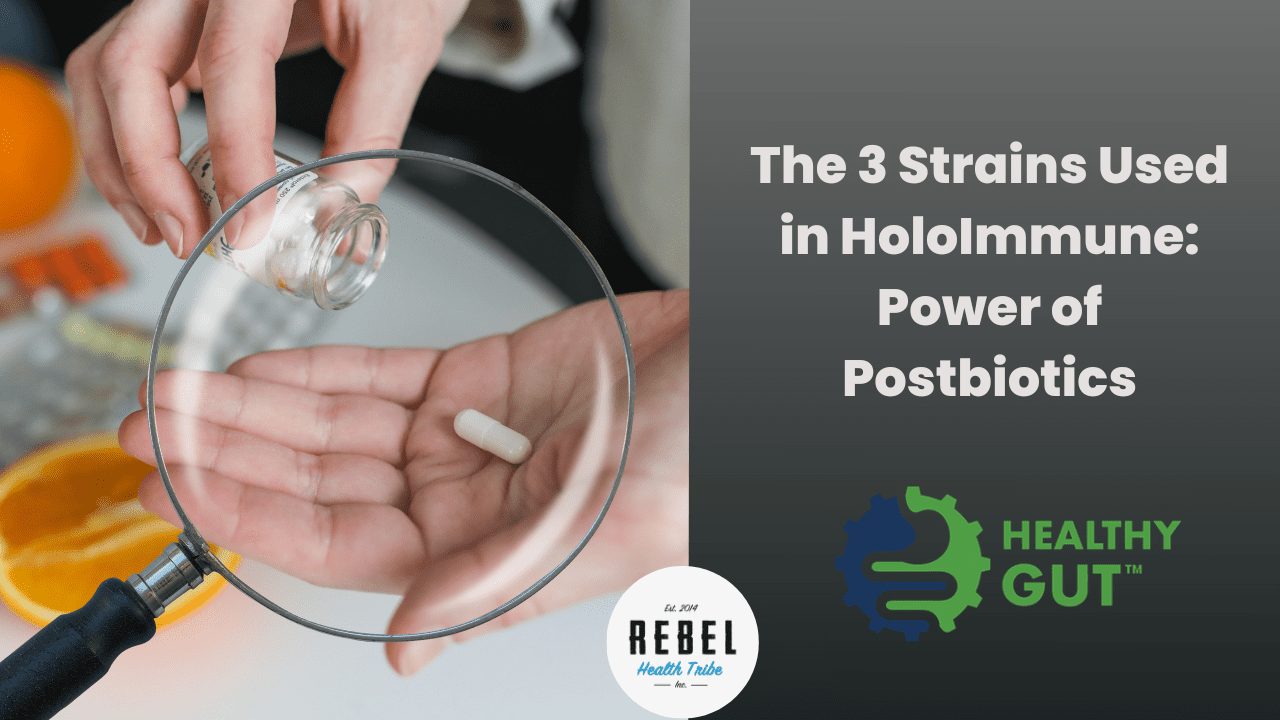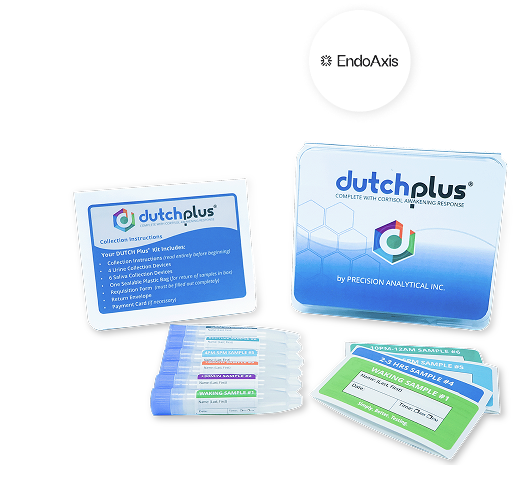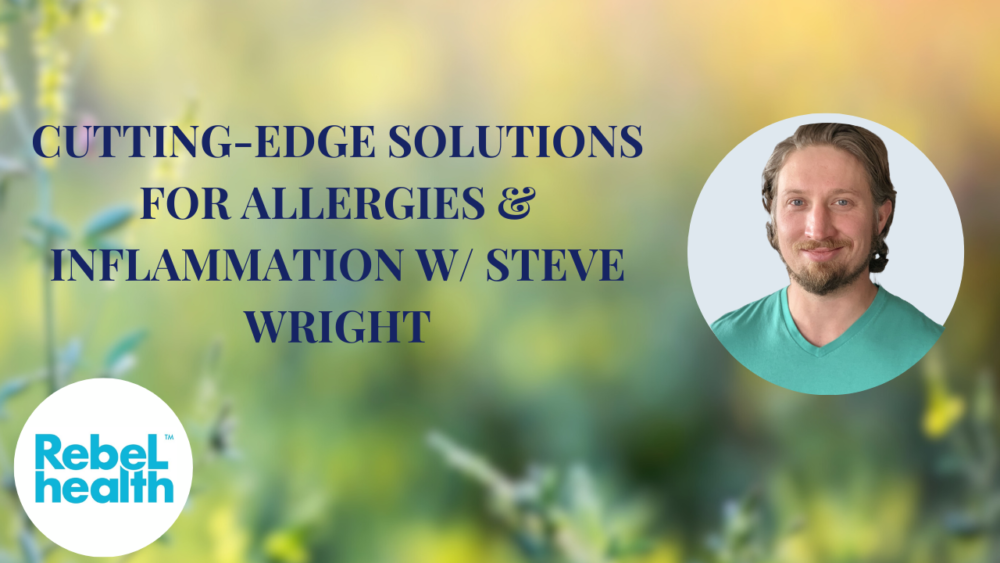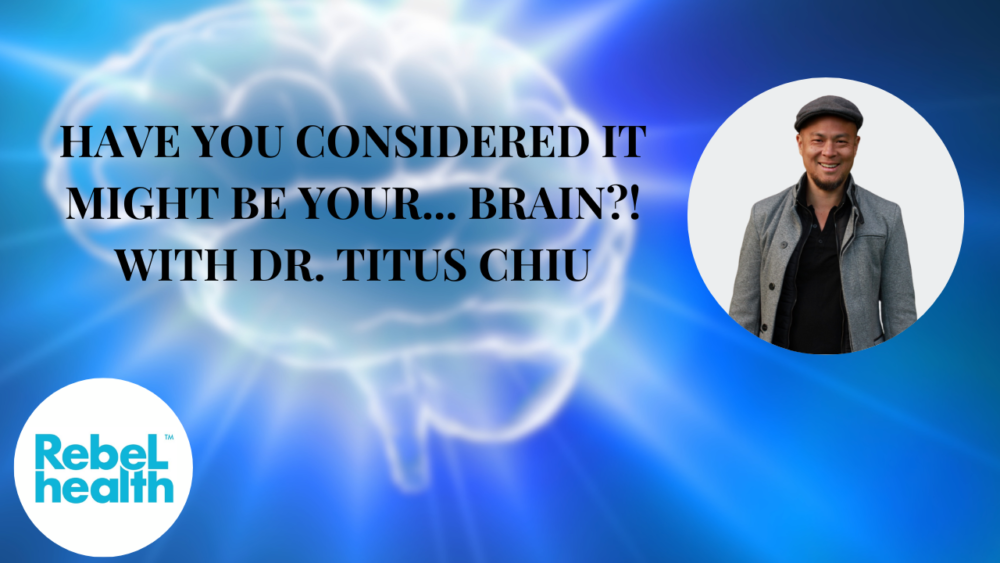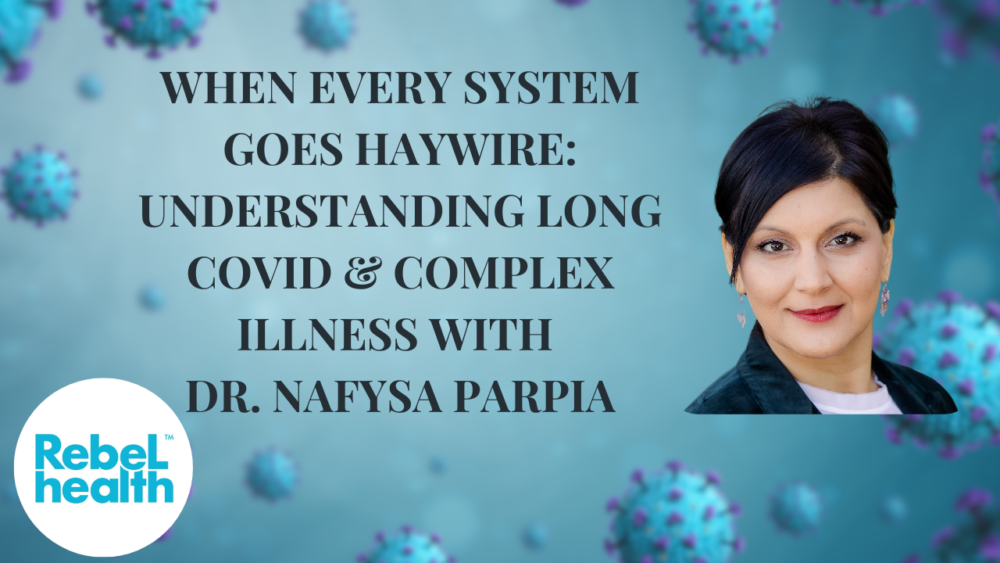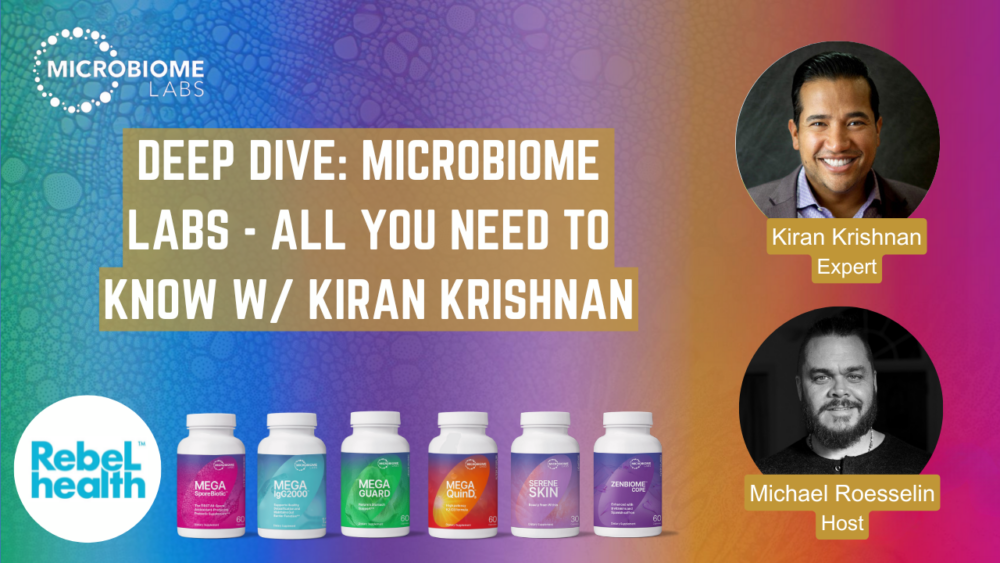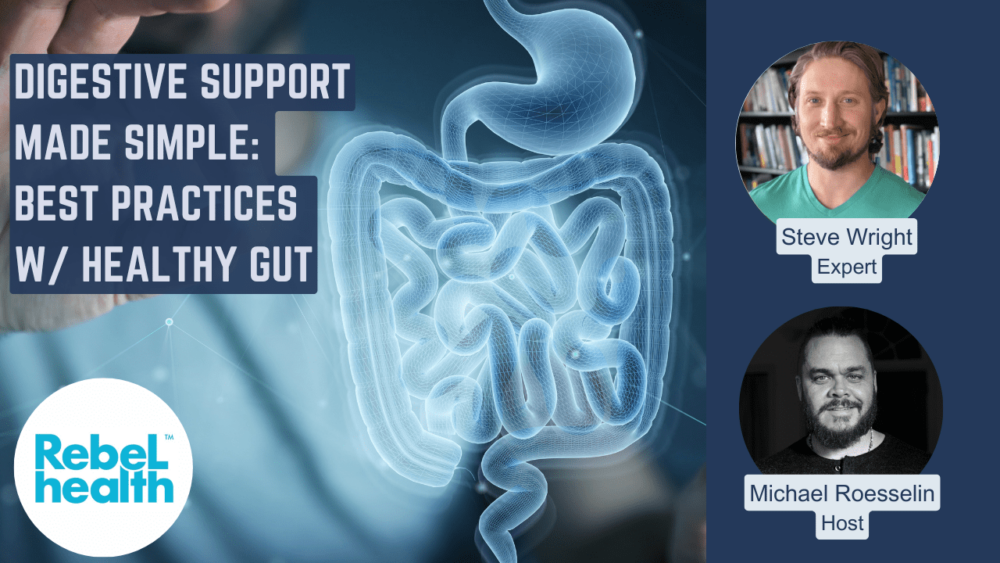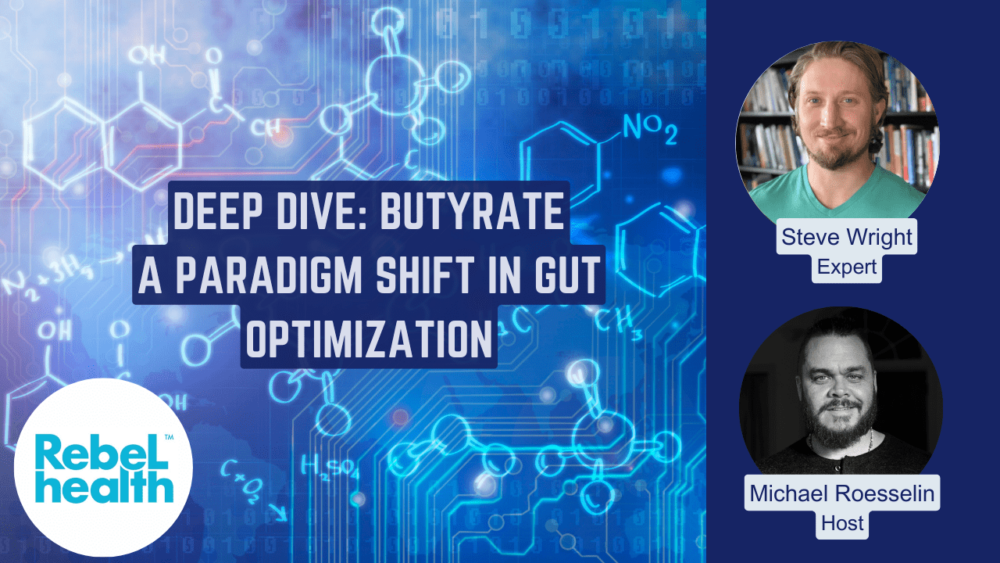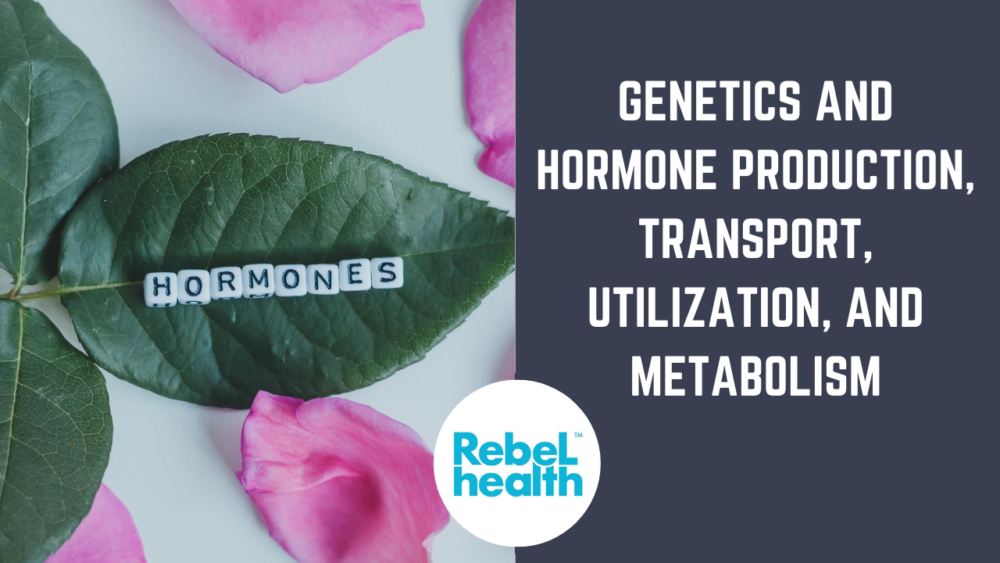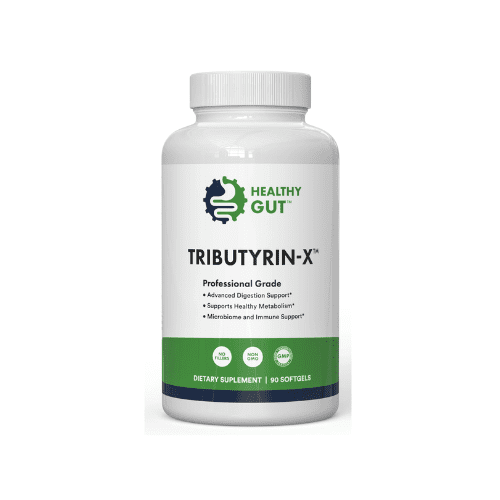[Michael Roesslein]
Hey Nisarga, welcome back to the show.
[Nisarga Eryk Dobosz]
Thank you, Michael, for the invitation. I’m happy to be here.
[Michael Roesslein]
I’m excited. I love when I get to bring some of my own teachers in front of our community and I’ve had the pleasure of learning from Nisarga quite a bit now in the last, I don’t know, it’s probably been almost three years since I started Biodynamic Breathwork and Trauma Release Training and we’ve been together a couple times in Poland. So we are going to talk today, we were just chatting before we went on air, about a couple things that I want to really introduce as things that can be core aspects of your healing and I think are often overlooked or not really known about or kind of on the outside still a little bit in the health world and might be looked at more of like a luxury or some activity or something like that and we’re going to talk about the deep value of these things and the two things we’re going to talk about are the breath and breathwork and bodywork and hands-on bodywork, something that I think a lot of people are like familiar with, oh I’m going to go get a massage, but they don’t understand the depth to which bodywork can have a healing impact on the body. So I think the best way to start that conversation would just be a little bit about your getting into these things.
I know that you didn’t start your career, adult life, as a bodyworker or a breathwork facilitator, very, very different actually. So if you want to give the short version of what you were doing and then how you found your way into working in the body, I think that would give people a good kind of introduction to this.
[Nisarga Eryk Dobosz]
Thank you so much. Very interesting topic, bodywork, massage, breathwork. And my journey started many years ago.
I was finishing, I graduated from Technical University in Warsaw, production of engineering and working for some corporations, moving to UK and kind of moving on the ladder of the corporate and just in the beginning wanting to be successful in that world. But after a few years realizing that that actually doesn’t suit my calling, there was some inner voice that was telling me that’s not really for me. And it was amazing experience.
I learned a lot, made amazing friends, friendships. And at some point, already when I was at the university, started to kind of exploring spirituality through yoga, through breathwork and pranayama and started to really my journey into within through those practices and discovering somehow calling in my hands. I couldn’t tell in the beginning what that was, but it was kind of kinesthetic urge to express myself through my hands.
And that later on, I understood that it was that calling of my soul that somehow was trying to find a way to work with the body. So maybe that engineering that I used to do now, it’s a body engineering, fixing, helping people to get aligned, release trauma, release pain. So in some ways, I call it body engineering a little bit.
[Michael Roesslein]
I think that’s a good analogy. And I’ve actually run into, thank you for sharing that. And I want to talk a little bit more in a second about this voice or this knowing that you had that you kind of weren’t on your right path, because I think a lot of people can relate to that.
And I think in our culture, just in modern society, I think there’s a tendency to ignore that. So let’s come back in a second. But you mentioned exploring the body and working with your hands.
So was the first step that you took in that kind of direction, did you start learning bodywork? Did you receive bodywork? How has that opened up to you?
Was it through the yoga community?
[Nisarga Eryk Dobosz]
I was receiving during my early search of spirituality, I was working with the psychotherapist who was also Lama Lama knowing massage therapist, and he was working with me, you know, for psychotherapy, but also kinesthetically for bodywork. And that was tremendously transformative for me. It opened a lot of emotions, it opened my body to feel to sense.
And I was so blown away, I was just walking bliss blissful for days sometimes after a session. And I couldn’t believe it coming from really stress and mindy and cut off lifestyle where I was drinking and overeating. And even at some point of my life, before that taking steroids for gym and pumping my muscles being completely disconnected to the place where I could feel, cry, laugh, feeling joy, it was just unbelievable for me.
And that was a moment where I felt that is life. No matter what it takes, I’m gonna find a way to live that way, where I can feel myself and express my emotions. And that’s how it started.
And that opened up the passion, because I noticed how much that changed my life. So I started learning from that therapist, and then later on finding different teachers. But the journey from going out from corporate to starting doing what I was passionate about was a gradual, I was still one foot in the corporate, because that was giving me safety.
I think this is really important for people who look for the passion to understand that some safety needs to be established, that if we make this dramatical, drastical cut off, sometimes it works, but sometimes before the new lifestyle picks up and gives us material benefits that are so important in life to survive, to support our families and ourselves, that moment of transition is very important. So I often suggest to people who are on this threshold, really stay where you are.
And keep learning, keep learning until you are confident enough that you can step out of that war that gives you confidence. And you can just spread your wings and fly. Because otherwise, it can be for some people very challenging.
And I see some people doing that drastical move, and they go to depression, they go into insecurity, and that is too much, too fast. So that was for me, that journey of transition took four, five years before I finally decided to move to India, live many years in India and quit corporate work. But I already had a skill in my hands, I was already doing the work, so I knew I can survive.
[Michael Roesslein]
I think that’s good advice. I think there’s this, in the age of Instagram, I think there’s a lot of memes and crap out there that’s like, ditch your thing and go do what you love. That’s a thing, that’s like a huge thing in the personal development world, in the mindset world, it’s like ditch your life that you have, because this doesn’t fulfill you and go dive in 100%.
And I think that your measured approach to it is much more sane. I’ve made that mistake before, I’ve quit something and gone and I want to go do this, but I didn’t really know how to do it. And then it was extremely stressful.
And it was hard. And then that stress is more than the stress was of being in something that wasn’t exactly where I wanted to be and doing it more measured. But I want to ask about, you said Lomi Lomi, and I know you teach that now.
I’ve never received this. I’ve received some sessions of the MER, the Myofascial Energetic Release is another modality of bodywork that Nisarga teaches and uses, but I’ve never received a Lomi Lomi, and this comes from Hawaii, correct?
[Nisarga Eryk Dobosz]
This is Hawaiian bodywork, Polynesia, Polynesia, Hawaii.
[Michael Roesslein]
Okay.
[Nisarga Eryk Dobosz]
Yeah, New Zealand.
[Michael Roesslein]
Can you give just a little bit, I’m sure most of our people listening have never heard of it before, because I hadn’t, and I’m pretty knowledgeable about body things. And that was a new one to me. And I’m curious how you would explain it, like a little bit of a little elevator pitch on Lomi Lomi.
What is it that makes it unique? And what is behind it? How are you walking out of those sessions and floating down the street?
[Nisarga Eryk Dobosz]
Lomi, Lomi Noi, it’s Hawaiian bodywork, and it’s deeply, deeply transformative. People who walk out of the room, they just feel blissed out. We just don’t work with the physical.
The beautiful thing about Lomi is that we don’t only work with the physical body, but we bring emotional and spiritual body, establishing intention. There are some prayers, we work with different elements of nature as a practitioner. So we bring, when you enter the room, there is a sense of being in Hawaii, the smell, the decorations.
There’s a lot of movement during the session. The practitioner giving the session is in this constant movement, generating fire, generating life, life force. And that gives that transmission for people to open up to their deepest emotions, deepest hidden emotion that are very often stored in trauma vortex, that place where we really hide, where we protect, where we create defense mechanism around because that’s the place of pain.
That’s the place where we couldn’t express what we wanted to express during traumatic event. And we really hide it because there’s often shame or guilt around that place. And because of that compassionate presence in Lomi, coming from Hawaii, you know, aloha, love means to be happy with, is the essential greeting in Hawaii.
So imagine when somebody greets you, means they greet you, be happy, I’m happy. Let’s welcome each other in happiness. That’s the basic energy in Hawaii.
And that comes from that energy. So the practitioner gives that unconditional loving presence to the recipient and accept the person and see, hear the person as it is without wanting to change anything. And when that happened in any healing environment, that creates profound amount of trust.
And person can just completely let go of this defense mechanism and surrender to that profound healing energy that opens up the heart and often deep, deep, deep emotions. So that’s just like melting people who leave the session, they feel like the pain, the tension, the joints melt, everything is more flexible, more fluid, more joyful, feeling lighter, we feel lighter and more connected with our body, more accepting.
[Michael Roesslein]
Hey, you sold me. I’m in. I know you have so much on your plate when I’m going to be in Poland later this year to assist at a training for biodynamic breathwork and trauma release, where he’s one of the lead facilitators or teachers.
And I might try to wrangle you into doing a Lomi Lomi session. I know you’re really energetically drained at those trainings, but we’ll see what we can do because that sounds really nice. And I want to touch just on a couple things there.
One is I recently recorded two podcasts with a doctor in California named Dr. Eric Gordon, who works with probably the most complex, chronically ill patients that are out there. They have the Lyme disease and autoimmune disease and nervous system dysregulation conditions and all kinds of like chronic fatigue and complex illnesses. And when I asked him, what is often missing?
Because these people have been to 10 doctors before they come see him. And I say, what are they often, what have they never tried by the time they get to you? Like, what is something that’s been ignored by the time they get to you?
And he said structural imbalance. He said that structural imbalance, postural imbalance, like tight muscles, rounded shoulders, necks being pinched, like all of these things impair the flow of the lymphatic system. So people are more prone to becoming toxic with different kinds of exposure to things.
It impairs the way that blood flows through the body, that energy flows through the fascia. He said people come in and they’ve never ever considered doing any kind of body work, any kind of massage. They haven’t worked with chiropractic.
They haven’t done anything. And you can just see their bodies are tense. And if someone’s listening, I’m kind of contorting myself if you’re not watching.
But like, they’re contorted and they’re tense and their neck is pinched. And he said, sometimes these people, I send them to the right body worker and these things get opened up and the body just flows better, the systems work better. And it’s a major thing that can block their healing.
So I just want to reference that as something that I think is really important that a lot of people don’t think about. And then I forgot to mention that we’re both trained in Compassionate Inquiry also, which is Dr. Gabor Maté’s program. And I actually recorded with Luke yesterday.
Do you know Luke? Oh, fantastic. Of course.
[Nisarga Eryk Dobosz]
Yeah.
[Michael Roesslein]
I recorded with Luke yesterday. I don’t know if these, I’ll try to air these back to back because that’ll make this make more sense. But it was a great conversation.
And you mentioned that the receiving this body work, and this could be Lomi Lomi, Lomi Lomi Nui?
[Nisarga Eryk Dobosz]
Lomi Lomi Nui, yes.
[Michael Roesslein]
And then there’s, you know, the myofascial energetic release, which you also do. And then even into the biodynamic breathwork that I facilitate, that I’ve learned from you, there’s body work and touch involved in this as well, to a lesser degree, but there is some. And the emotional things that can happen now.
Now, anybody who’s done quite a bit of yoga, or anybody who’s gotten a lot of massages, odds are, if they’re willing to admit it, they’ve probably cried on the table or cried on the mat. I cried in a yoga class not that long ago. And the culture here, I live in Italy, is a little different.
Even in the States, like men aren’t supposed to cry, definitely not in public. In Italy is even more. That’s not, that’s not something that anyone would have seen before.
And there was some awkwardness in the lobby after the class, because I cried on my mat, but it was, it just was there. And so I did it. But this happens in these sessions, right?
And so I think people think that like these emotions live in their head, because this is where they think about it all the time. Like, I don’t think about that. I don’t talk about that.
Or I don’t, you know, I don’t, I avoid this or like, sadness is something I think. But that’s not true. Right?
Like these, these, these emotions live in the body. And with these various modalities, this is where they can be felt and expressed, and they kind of come back. Can you speak a little bit to how do they get there?
And then how do they come out? And why is this important?
[Nisarga Eryk Dobosz]
So we are, it’s a great question. And I think many of many of the conditions and illnesses in today’s world comes from denied suppressed emotions. I truly believe that.
And I, and I see that on and on and on with clients who come with all sorts of conditions, already after one to a free session, or when they are able to express primary emotions, something profound is shifting, our emotional and physical body are intertwined, connected. So anytime we change something in the physical body, it affects the emotional body. And anytime we work for emotions, it affects our physical body.
When we start opening up our emotions, our bodies start changing, realigning, or either we run through bodywork or massage, we can realign the body, and then our state is shifting. Now, how they come into the body and what happens? So just a very brief about anatomy of trauma.
When we are born, our sympathetic and parasympathetic are somewhat in balance, we are constantly moving between activation and rest, digest, and that’s a natural wave. And at some point throughout our lives, usually if we talk about developmental trauma, age zero to seven, eight years old, something happens when it’s too much, too fast, too intense, that creates a traumatic event. And straight after, or even during that event, when this experience becomes too much, we find a way to create defense mechanism to survive, survival defense mechanism, otherwise we wouldn’t survive too much pain.
And not to feel that pain, we basically cut off from sensations and from the motion because it’s too much. And that’s the moment when our body just imploded this experience and those emotions into the physical body. In the book, Wessel van der Kolk, body keeps the score, it’s exactly what he’s talking about, that the body keeps the score of those experiences, and it stores in the fascia, in the soft tissue, in the muscles, in terms of dense, contracted tissue.
And those emotions are related to those traumatic events, and we call them trauma vortex, emotions that are related to trauma vortex. So, in biodynamic breathwork, for example, what we do to release the trauma or reorient the body and start bringing more plasticity for the nervous system, we need to find first, regain safety in the body, start feeling and sensing any sensations, any resource, any place where we can start feeling okay in our body, start resensitizing the places that we have disconnected from, disassociated from, simply because that creates a trauma vortex, that creates a safety that I am present, that creates also what is called in IFS, internal family system, functional adult. To come out of traumatic event and heal the trauma or recover from traumatic event, whatever way we want to call it, we need to start building functional adult.
If we are in the space of wounded child or adaptive child defense mechanism, there’s no way because there’s no witness that can understand that I am not anymore this five years old boy whose father left and I am super afraid to be on my own and have this feeling of abandonment. I am now adult who understand that when somebody say or do something, I need to look into from functional adult what’s happening in my body, what are the feelings, the sensations. And from that space, we can go back into the trauma vortex and start expressing those primary emotions that are stored there.
And that brings a lot of healing because that opens up the physical body and that life force, energetical life force that flowing through the body. And that brings more joy, more happiness and more alignment, more connection. So, you know, we are emotional being and we are designed to feel.
Feeling is healing, you know, like a very famous phrase. And my friend, Gitan Tonkov, who is a founder of Biodynamic Breathwork, he says it is in his book, Feel to Heal.
[Michael Roesslein]
I think that’s a great explanation of it that I think a lot of people will understand. And luckily, this is getting a lot more conversation around it. When I first read Gabor’s book, Gabor Mate’s book, When the Body Says No, was probably about 10 years ago.
And at that time, the concept that trauma or suppressed emotions or living out of alignment or any of these kind of things can actually cause chronic health conditions was a pretty fringe idea. It was out there. There was people who believed it, but there wasn’t a lot of them.
And now, I think this is one of the more important conversations that’s going on because people are getting sicker. As the world is getting more toxic, as stress is getting higher, as our lives are becoming more insane and unnatural and out of the normal way of living, and people are getting sicker, there’s more and more chronic disease, there’s more and more mental health issues. I’ve seen some statistics, and I don’t remember them off the top of my head, about percentage of Americans that are on some form of psychotropic drug, like for depression or anxiety or something, and it’s insane.
Like the number, when I saw it, I was like, holy shit, like that can’t be right. So I looked it up, and it was right. And the rest of the Western world is not far behind, because they’re always the first ones, and then that culture spreads everywhere, and then everything follows.
So something is wrong. And there’s a lot of people not getting better with the things that used to kind of help people get better. Like, oh, they change their diet or they start an exercise program, but they’re still staying sick.
And I think this is the elephant in the room that nobody’s talking about, is this, the trauma, the emotional suppression. And when you’re talking about these things being in the body, it’s really interesting now, because I’m seeing people, I follow a lot of interesting folks on social media that are into cool things, and some of them are studying fascia. And fascia as a semiconductor, I think is the right term, of energy.
It’s electricity. Things move through fascia faster than the nervous system goes. It’s like a communication network.
And when you’re talking about this tension in the body, and these emotions being released, and this stuff that you’re working on in the body work, a lot of that is the fascia, right?
[Nisarga Eryk Dobosz]
Yes, yes, yes.
[Michael Roesslein]
So then there’s these models where the emotions get suppressed, the fascia tightens, this suppresses movement, flow, communication through the body, if the fascia is used for this communication and energy flow, and then the body work comes in, or the movement, or the breath work, or whatever, releases the fascia, the emotion comes out, the things flow better, right?
[Nisarga Eryk Dobosz]
Yeah, great to bring fascia. I’m really fascinated about fascia, because I’m a practitioner for my energetic release, and I study fascia a lot. I work on fascia with thousands of people until now in my career.
And fascia, there’s a research from Robert Schleip, he’s one of the most famous researchers on fascia. And in his research, he’s saying that there’s 200 million nociceptors only in superficial layers of fascia. Nociceptors are nerve endings.
And that’s a huge amount of innervation. So there is a possibility, because we’re still learning about fascia a lot. And maybe understanding fascia will be the key to relieve the pain in future, because medical workers start opening up their understanding and be curious how releasing fascia can help people out of pain, because it’s happening.
And Ida Rolf was the first one who started working in the 70s through Rolfing and then many other modalities. But so what it means to us, body workers, that fascia is probably one of the most innervated organs in the body. That means that all these nerve endings, fascia is a connective tissue wrapping around every single cell in the body, including our nervous system, that is the main manager of whole systems in the body, manage our heart rate, respiration, elimination, everything.
So when we think of it this way, then we can have understanding that by releasing soft tissue and fascia, we start releasing and open up the sensory nuclei of our nervous system to travel back into the brain. Because our nervous system, let’s say vagus nerve, the famous vagus nerve, 10th cranial nerve, runs from the brainstem and through the side of the neck, innervates all more vital organs through the chest and abdominal region all the way down to pelvis. So pretty much everything, the major organs are connected to the vagus nerve.
And only 30%, about 30% of signals are motor nuclei. That means that they travel from the brainstem down into the body, into the organs. And 70% is other way around, sensory nuclei traveling back from the guts, from the heart into the brain.
So that’s amazing information. And for example, practice of heart-brain coherence, we just put our hand on the heart, close our eyes, take a few deep breaths, and our state can change, our energy can stay. Because simply, we start aligning to the energy of the heart.
And the heart communicates more with the brain than the brain with the heart. So in that sense, fascia, when I work now with fascia, I used to mostly think of it more as muscle and alignment.
[Michael Roesslein]
And I think that’s where most people kind of are with it. They think of like that, if they eat meat or like the chicken, you know, like the thing that’s actually probably a tendon when they see it, not fascia. But I like how you meant fascia weaves through every single tissue, every single cell, every single everything in the body, right?
[Nisarga Eryk Dobosz]
Yeah, yeah. So that’s the biggest shift for me to start understanding that when we touch the body, we are touching nervous system, and that nervous system responds. And depending on our client state, we either can bring them into the parasympathetic or sympathetic nervous system by mindful, loving, either deep or softer touch.
And that’s for me profound. And I see deep results when this understanding comes in practice, because I practice a lot.
[Michael Roesslein]
Yeah, you’re a very busy guy, teaching and practicing. I don’t know what you do more of, but I see your social media and you’re always in some country teaching some group of students doing something, because you teach the Lomi Lomi Nui, you teach the MER, and you teach the Biodynamic Breathwork. I want to touch on the Breathwork just a little.
I think Breathwork’s like a trending thing right now for better or worse in some circles, like my first experience with Breathwork. Now, I’ve completed their training at BBTRS, which is very extensive. It took me two years.
And that wasn’t where I started, though. I actually had, fun fact, I had never experienced Biodynamic Breathwork and trauma release before I signed up for the practitioner training. I had never, I watched one five-minute conversation with Giten talking about titration and pendulation in the nervous system and using Breathwork in a responsible way that is suited for that individual’s capacity to handle what’s happening.
And I had known I was looking for a Breathwork to study and to learn and to use, but my first experience with Breathwork was, what is that called? Stan Groff’s Breathwork. No, what is it called?
Stan Groff, the Huff and Puff, like the wild, like it was, it was like 90 minutes.
[Nisarga Eryk Dobosz]
Rebirthink, it’s called Rebirthink.
[Michael Roesslein]
I think that’s a more modern variation of it. I forget the name. Anyway, Stanislav Groff is the guy.
He’s a LSD researcher and then switched to Breathwork. But his style of Breathwork was created with the intention of recreating like four hits of LSD. So, it’s basically like Huff and Puff for 90 minutes until you’re like completely out of the world.
And I can handle things like that. I have a lot of experience with psychedelics. I’m pretty comfortable being uncomfortable or being in weird states.
But in the room I did it in, there were a handful of people who should have had nothing to do with that, that had breakdowns. They were screaming and crying and like hyperventilating and panicked and freaked out. And then it was over.
And the guy was like, okay, thanks, everyone. See you later. And then we’re outside in the parking lot.
And I see this girl just like out of her mind in the parking lot. And I was like, do you want to go get a coffee? So, we went.
She goes, I don’t know what just happened. And like that soured me on Breathwork for a little while because this is irresponsible. And so, can you just speak to, if somebody’s never practiced Breathwork before and they hear us saying the word Breathwork and we’re talking about biodynamic Breathwork, we’re talking about rebirthing.
You mentioned Pranayama, which is a giant term for yogic breathing practices. What does Breathwork really mean? And what would you recommend people to, obviously, we’re partial to biodynamic Breathwork and trauma release, but what would you recommend to new people to look for if they’re going to try Breathwork?
What questions should they ask or what should they look for? What should they make sure is present?
[Nisarga Eryk Dobosz]
So, that’s, of course, you’re right. There’s so much going on and it becomes trendy. And Breathwork, in general, means therapy that uses the breath as a main tool.
And there’s a lot of things going on out there. And each one of those modalities, the Stan Grof is more like a modality that works with altered state of consciousness that was designed to have that similar state like during LSD.
[Michael Roesslein]
Holotropic. Sorry, it’s called holotropic.
[Nisarga Eryk Dobosz]
Holotropic breath.
[Michael Roesslein]
Yeah.
[Nisarga Eryk Dobosz]
Some modalities like Wim Hof, let’s say, more focused on longevity and many, many others. And each one of them has different aim, different purpose, different focus. What we are focusing in biodynamic Breathwork, we are trauma-oriented breath modality.
And our understanding is that breath is just a tool to connect to emotions from the trauma vortex. And before expressing them fully, we need to find the safety in the body. To do it in a way that is not overwhelming, that it’s safe, that it’s not recreating another trauma in the nervous system, that people can leave that room after session grounded, aware and at peace in the connection with their heart.
That’s the aim of our modality. And that’s why our training is so long, because we really pay attention to teach practitioners how to work safely, how to work with those terms we mentioned, pendulation, titration, how to move between place of charge and place of resource, and how to do it in a safe way that it’s not overwhelming, how to do it in a way that to understand every individual as a different personality structure. Because we cannot just put everybody in the one bed and the one pot and thinking, let’s breathe all together.
We need to adjust the way for everybody’s breathing to meet the sensitivity of their nervous system. Some people come with tremendous amount of disassociation and freeze. And if we put them into intense breathing, what it does, it just dissociate them more.
For what works for this kind of people is to slow down to start feeling maybe in the beginning, less breath, but more felt sense, more interoception, finding that safety in the heart. And then slowly when that is reestablished and the dissociative pattern fades away, now let’s go with deep breath and let’s encounter emotions from the trauma vortex. Otherwise, it’s too much, it’s too intense.
But we are really focusing on that safety. And what I would recommend if you look for breathwork modality research, how long does modality exist? Who are the teachers?
What is modality? What is the main focus of this modality? Is that something that I want to learn?
Check the testimonials. How much training?
[Michael Roesslein]
I get your breathwork certification in three hours on a Saturday afternoon.
[Nisarga Eryk Dobosz]
That’s total BS. That’s impossible. It’s impossible.
See credential. Is that modality accredited by some breath organization, some health organization? Read testimonials.
Usually, if there is a modality which exists a long time, there’s some testimonials, there’s some comments of people study. Don’t just sign because it’s short or cheap, or they have amazing marketing that happens also. Of course, just do a little bit of research and you can find easily information.
But I think the main thing is, are you resonating with the teaching? Just inquire and see if you’re resonating and you feel safe, and other people feel safe with those teachings, then that’s maybe for you.
[Michael Roesslein]
Great. Thank you for laying that out. I get targeted with ads now for breathwork trainings because I think it’s in my profile or something, that breathwork, so then I get these.
Join us Saturday for three hours and get your advanced master breathwork practitioner certification. I don’t remember how many hours the BBTRS training is, but it’s like 400 or hundreds of total hours between the trainings, the retreats, the sessions, the clients.
[Nisarga Eryk Dobosz]
Yeah.
[Michael Roesslein]
I remember how clueless I was the first session that I facilitated in Poland in person, and I had already gone through a lot of the online training. I’d already done hours of training in quotes, and then I sat down in front of someone for the first time and I was supposed to do this, and I had more training at that point than you would get in three hours on a Saturday workshop, and I sat across. It was Christian, Christian from Switzerland.
I don’t know if you remember, but tall guy.
[Nisarga Eryk Dobosz]
Of course, of course.
[Michael Roesslein]
Yeah, yeah, yeah. I was sitting, and he’s really experienced, so I was like, oh man, I shouldn’t be doing a session for this guy. He’s really experienced.
He knows I’m going to embarrass myself, but I remember feeling like I have no clue what I’m doing, and that was with far more training than half of these people out there that come to my breathwork on Sunday. It’s the Wild West in a lot of ways, and I like that look for the credentials. Look for the, is it accredited by different organizations?
How long has it been around? I also love that you mentioned if someone’s dysregulated and they’re in a really activated state, they shouldn’t sit down and huff and puff for an hour, and I had some clients with BBTRS. When they sat down on the cushion across from me and I asked them how they were doing and why they were there, they already had tears in their eyes.
I could already see the body was maybe a little tremble or a little, it was right here already. It was all right here. We took about four breaths, and here was the emotion.
I wasn’t going to blow these people, you don’t have to blow everybody out. More is not always better. That’s what I had to learn, because I used to be one of those, if a little is good, more is better, and that’s not true.
I think that’s with body work too. I used to go to body workers when I was younger, and if I wasn’t bruised and limping when I left the body work session, I was like, oh, that guy sucks. He doesn’t know what he’s doing.
If I would have heard you when I was 25 talk about Lomi Lomi Nui and the love and the aloha, I would have been like, get this hippie guy out of here.
[Nisarga Eryk Dobosz]
He can’t do shit.
[Michael Roesslein]
I don’t want to do anything with this. Now I hear you talk about it. I’m like, wow, that sounds really nice.
I’m going to try to convince him to do a session when we’re in Poland, because it’s not harder, faster, more is better, even with body work, with breath work, with any of these nuanced things that deal with the nervous system and the fascia and the emotions. What’s right for that person?
[Nisarga Eryk Dobosz]
Something else I wanted to add, because you mentioned Gabor Martin, because I’m also a practitioner, and there’s a beautiful quote from him that I really like, and that quote is about trauma healing. In his latest book, The Myth of Normal, there’s a quote from him saying that trauma healing happens not because of absence of danger, but presence of connection and intimacy. I will repeat, trauma healing happens not because absence of danger, but presence of connection and intimacy.
That relates to that tremendous amount of people in America, also in all over the world, that are taking all sorts of antidepressants and drugs, because I believe that our society in general, we are starting to separate. Of course, we have our stories, and that story is kept inside, and we separate from each other after COVID even more, looking at each other a bit like, you know, suspicious and judgmental. And that itself adds up to that.
And I believe if we were in the therapy, I am noticing when we meet in biodynamic breathwork, I mean, our training group of 30, 40 people, and we breathe, we are intimate, we share intimate stories, we share intimate experiences, people just leave transformed, deeply, deeply transformed. And I truly believe that in addition to modality and technique, that because we are very intimate, we are very open, we are very vulnerable, we hug, not that everybody has to hug, but people when they become that vulnerable, they just hug, they connect with each other, they share, and that’s profoundly, and it brings profound healing also. I just wanted to add that before, but that’s a good moment now it came to my mind to share.
[Michael Roesslein]
No, that’s great. I think it’s really overlooked a lot of the time. I think a lot of people try to go at healing work, like do it yourself, like DIY, like they get the books, they buy the course, they try to do the, you know, one on their own, like they try to do healing work.
And you can, there’s a lot you can do, you can learn things, you can raise your awareness, you can meditate, you could do all this stuff. But I think that that connection component, I know for me personally, in my own journey, has been probably the most potent thing that I’ve done, is having those type of connections and having that type of reflection back and that acceptance. They even got me to like dancing in Poland.
Yeah, it’s kind of a joke at our school. There’s a lot of dancing involved in the BBTRS world. And I am somebody for my whole life who hated dancing.
And I declared this the first day of school. I was like, I hate to dance, just letting everybody know. And by the end of my first, they teach eight day, I think they’re eight days, seven days, eight days, I don’t know.
It feels like 100 days that you’re there, which in a good way. And towards the end, there’s multiple times a day and Nies is a great DJ, by the way, I’ll just throw that out there. He’s the DJ.
And people are coming up to me and being like, Michael, don’t worry, I won’t tell anyone, but it looks like you’re enjoying yourself. And your secret’s safe with me, but you’re kind of giving it away because I saw a smile. But it was about finding the right place and the right people and the right music and the right energy and the safety to just not give a shit what anybody thinks.
And that’s like a really, really powerful thing.
[Nisarga Eryk Dobosz]
Intimacy helps us to actually understand ourselves better. We are just helping each other to mirror. The best therapy for me that I had in my life was the therapist who didn’t speak much, but mirror me and I could discover myself.
I could find a voice to speak what I’m feeling, what I’m sensing, what is challenging for me. And when that happens from that inner wisdom, somebody who can see and hear me without much speaking often, that creating that mirroring, loving, compassionate me, mirroring, that’s just the best therapy ever for me. And I prefer that than the best coach to tell me 10 things to do in the next month to get better.
Because often those things come and go and they are just somebody else’s experience, somebody else’s wisdom repeated to me. So I just truly believe that learning is through experiencing and finding that wisdom within. And we can help that intimate connection to be mirrored to each other to discover those gifts.
[Michael Roesslein]
Beautiful. I think we can stop there. I want to let people know where’s the best place to you teach all these different things.
I know there’s several different websites where people can learn about these things. Where’s the best? For Biodynamic Breathwork, is it biodynamicbreathwork.com now?
[Nisarga Eryk Dobosz]
Yes, biodynamicbreathwork.com. If you want to find me, the best way is to go to my website nisargah8.com or Instagram nisargah8. That’s my profile and you will find very easily my calendar, all my events two years ahead in a few different countries.
[Michael Roesslein]
I envy this, two years ahead. That’s a nice thing to have, the structure. Okay, Nisargah8.
We’ll have the links in the show notes and everything. And that is Biodynamic Breathwork and Chama Release. It is Myofascial Energetic Release, which is the bodywork, and the Lomi Lomi Nui bodywork as well.
All of those have databases of practitioners as well, if you look those up and find. We’ll link the websites and everything. So bodywork, there’s self ways to do things, but so far we don’t have the technology for him to put his hands on you somewhere else in the world.
So finding practitioners near you and those things can be helpful too. And there’s people in those modalities trained all over the world, mostly by this guy. So Nisargah, thank you so much for the time and for sharing your own journey and your own wisdom around these practices.
And I hope that this was an eye-opening and heart-opening experience for people, and they’ll consider giving a try to some breathwork and some bodywork.
[Nisarga Eryk Dobosz]
Thank you so much, Michael. I really appreciate this talk.
